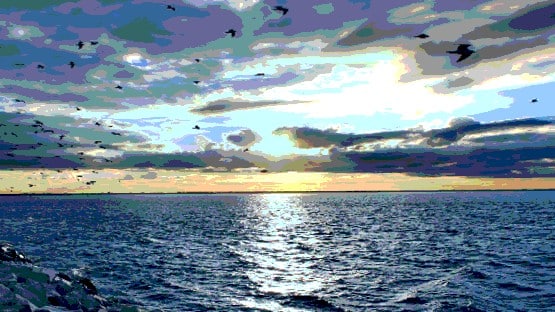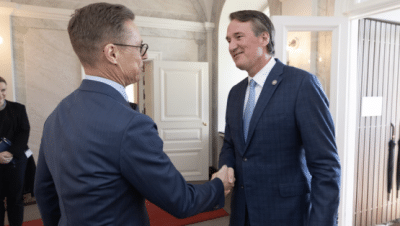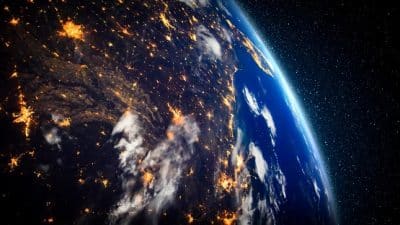
If I were the state of Pennsylvania, I’d hope to heed the upstream finger-pointing from Maryland and Virginia on my enduring failure to meet my Chesapeake Bay cleanup goals.
As the jurisdiction containing about 40% of the Bay watershed, my fertile farms leak enough pollution down the mighty Susquehanna, source of nearly half of the Bay’s river inflows, that the region won’t achieve its current goals if I don’t step up.
But if I were Pennsylvania, I’d be tempted to point out a Susquehanna’s-worth of downstream hypocrisies — like adding 10 times more people in Maryland and Virginia, like Maryland and Virginia degrading critical habitat along nearly 2,000 miles of Bay shoreline, like the downstreamers losing forests to development nearly three times faster than Pennsylvania.
Also, there’s the introduction of those invasive blue catfish in Virginia, which has led to Maryland seeking federal disaster assistance. And by the way, Virginia, you’re still taking menhaden away from larger fish and ospreys to please one very specialized fishing industry.
The point of all my pointing is not pointing for pointing’s sake. Rather, it is to suggest rethinking the current Bay cleanup goals — goals that Maryland and Virginia are much closer to meeting than Pennsylvania.
Those goals, in place for 40 years, focus tightly on reducing nitrogen, phosphorus and sediment to un-murk Bay waters and allow oxygen back into deep-water “dead zones.”
These will always be valid goals, and we can never back off on cleaning up all of their sources, which include dirty air, sewage and agriculture; or on protecting forests and wetlands that absorb such pollutants; or on minimizing pavement, which sends pollutants merrily along to the nearest waterbody.
But there’s more to the Chesapeake ecosystem than nitrogen, phosphorus and sediment. And there’s more to people’s enjoyment of the iconic estuary than stimulating oxygen in deep channels in the summer.
Increasingly, the science is suggesting we focus more on overlooked aspects of Bay health, like shallow water habitats. The armoring of nearly a fifth of the Bay’s 11,000 miles of shoreline with bulkheads and rock is a huge despoiler of shallow water habitat — which is so important to little crabs and fish, and to beach nesters, from terrapins and horseshoe crabs to royal terns and black skimmers.
Not so scientific, but no less important, is the public’s access to the shores of the Chesapeake — currently only a few percent of its enormous shoreline. Ask yourself this, downstream states: Would it be better to have a perfect Bay, inaccessible to most, or a fairly healthy Bay, with most of its shores in public ownership?
I might venture that none of the above relates much to what I do or don’t do on my upstream farms. Also note: I just added three new state parks upstream of the Bay, which include miles of shoreline along rivers and creeks.
The science is also showing that to truly make modern agriculture cease “leaking” fertilizers is going to be a taller order than we thought — well beyond fanciful win-win scenarios in which farmers who do right by the Bay also save money on fertilizer, fuel and other expenses. It could mean taking 44% of the region’s farmland out of production — an impossibility — to seriously improve the dead zones, according to the U.S. Geological Survey (as reported in the May 2023 issue of the Bay Journal).
Climate change, with its more intensive rainfalls and runoff of pollutants from the land, is going to make reducing ag runoff that much harder. Insane national energy policies that use more than 40% of the nation’s corn crop for ethanol — which takes as much energy to make as it saves — also drive more intensive, polluting farming.
Bay cleanup goals pay lip service to population growth, but essentially accept it. Maryland and Virginia absolutely embrace it. Between 2010 and 2020, Maryland added 385,000 people to the Bay watershed and Virginia a whopping 630,000. And a lot of Virginia’s people boom occurred on forested lands, with 60,000 acres lost in the most recent four years of record. I added only 85,000 people and lost 24,000 acres of forests.
Population growth is listed almost nowhere officially as a source of pollution or as a threat to Bay health. Almost everywhere, governments treat only its symptoms: sewage, paving, the loss of wetlands and forest, and air pollution.
As with climate change, population growth is going to undermine virtually every aspect of regaining a healthy Chesapeake. A recent widely read book, Drawdown, offers the “top 10” best ways to reduce the carbon buildup causing global warming. Population stability or reduction is listed nowhere. But if you made numbers six and seven a single item, it would be close to number one. Six and seven are “family planning” and “educating women and girls,” both among the best ways to reduce births worldwide.
I’m not expecting sympathy from downstream, but most of my voters don’t live in the Chesapeake watershed (Philly is on the Delaware River and Pittsburgh drains to the Mississippi). And I wonder sometimes, if the Bay watershed were one state, where would government put its pollution fighting dollars — more upstream maybe?
Farmland aside, I know I’ve got work to do. I’m ill-prepared for the population growth that will come from Marylanders seeking affordable land and homes. (My zoning, stormwater rules and forest protections are among the watershed’s worst.)
But after some 40 years of pursuing current goals and missing deadlines and the Bay still ailing, doubling down on business as usual isn’t going to work any more than continuing to act as if population doesn’t matter, as if we can grow our way to a healthier Bay.
Tom Horton, a Bay Journal columnist, has written many articles and books about the Chesapeake Bay, including Turning the Tide and Island Out of Time. He currently teaches writing and environmental topics at Salisbury University. His views do not necessarily reflect those of the Bay Journal. This article first appeared in the September 2023 issue of the Bay Journal and was distributed by the Bay Journal News Service.










